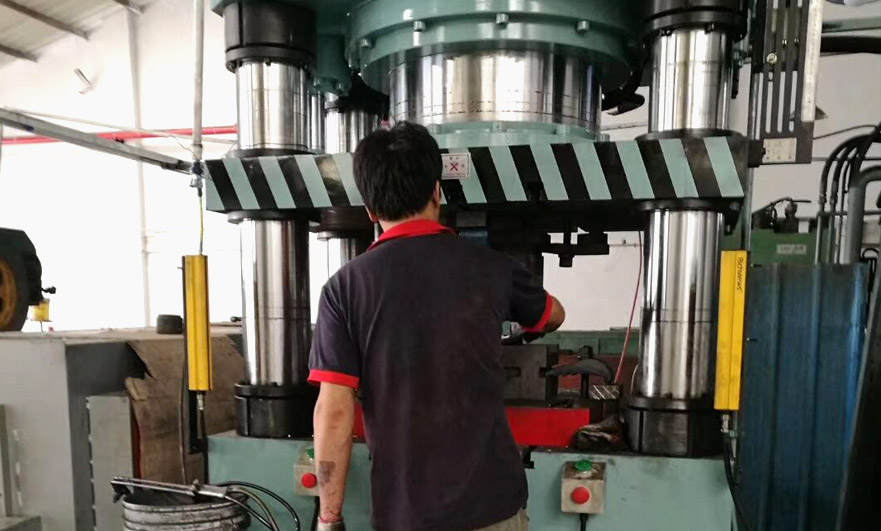15 years one-stop China custom CNC machining parts factory

Hey there I’m VMT Sam!
With 25 years of CNC machining experience we are committed to helping clients overcome 10000 complex part-processing challenges all to contribute to a better life through intelligent manufacturing. Contact us now
 209 |
Published by VMT at Aug 20 2021
209 |
Published by VMT at Aug 20 2021
Why Should Aluminum Alloy be Heat Treated?
The purpose of heat treatment of aluminum alloy castings is to improve mechanical properties and corrosion resistance, stabilize dimensions, and improve machining performance such as cutting and welding.
Because the mechanical properties of many as-cast aluminum alloys cannot meet the application requirements, except for the Al-Si series ZL102 and Al-except for the Mg series ZL302 and Al-Zn series ZL401, other cast aluminum alloys must be heat treated to further improve Mechanical properties and other service properties of castings.
Aluminum Alloy Heat Treatment Method
1. Annealing Treatment
The effect of annealing treatment is to eliminate the casting stress of the casting and the internal stress caused by machining, stabilize the shape and size of the processed part, spheroidize part of the Si crystal of the aluminum-silicon alloy, and improve the plasticity of the aluminum alloy.

2. Quenching
Quenching is to heat the aluminum alloy castings to a higher temperature (generally close to the melting point of the eutectic, mostly above 500°C), and hold for more than 2 hours to fully dissolve the soluble phase in the alloy. Then quickly cool the castings in water at 60-100°C, so that the strengthening components are dissolved in the alloy to the greatest extent, and stored at room temperature. This process is called quenching, also known as solution treatment or cold treatment.
3. Aging Treatment
Aging treatment, also known as low temperature tempering, is a process of heating the quenched aluminum alloy castings to a certain temperature, holding it for a certain period of time, and cooling to room temperature to decompose the supersaturated solid solution and stabilize the alloy matrix.
4. Loop Processing
Cool the aluminum alloy casting to a temperature below zero (such as -50°C, -70°C, -195°C) and keep it for a certain period of time, and then heat the casting to below 350°C to cause the alloy's medium solid solution lattice to shrink and expand repeatedly , And a small amount of displacement of the crystal grains of each phase, so that the atomic segregation zone and intermetallic compound particles in the solid solution lattice are in a more stable state, and the size and volume of the product parts are more stable. This heat treatment process of repeated heating and cooling is called cyclic treatment. This kind of treatment is suitable for parts that require very precise and stable dimensions (such as certain parts on test instruments). Under normal circumstances, castings are not treated in this way.
5. Code of Heat Treatment State of Cast Aluminum Alloy
Code Alloy state Function or purpose of heat treatment
T1 Artificial aging alloys made of metals or green sand molds have obtained a certain degree of supersaturated solid solution due to the faster cooling rate, that is, they have a local quenching effect. Effective for improving the strength of alloys such as Zl104 and ZL105.
The main function of T2 annealing is to eliminate the internal stress of the casting (stress caused by casting stress and machining). It has obvious effect on Al-Si series alloys, the annealing temperature is 280-300℃, and the holding time is 2-4h.
T4 solution treatment (quenching) is the preliminary heat treatment for other alloys that require artificial aging. For Al-Mg alloys, it is the final heat treatment, for other alloys that require artificial aging, it is the preliminary heat treatment.
T5 solution treatment (quenching) and incomplete artificial aging can obtain higher strength and plasticity, but the corrosion resistance will decrease, especially the intergranular corrosion will increase.
T6 solution treatment (quenching) and full artificial aging to obtain the highest strength, but the plasticity and corrosion resistance are reduced. Suitable for parts requiring high load, the aging temperature is about 175-185℃, and the holding time is more than 5h.
T7 solution treatment (quenching) plus stabilized tempering is used to stabilize the size and structure of castings, improve corrosion resistance (especially stress corrosion resistance), and maintain high mechanical properties. Suitable for parts that work at high temperatures below 300°C, tempering temperature is 190-230°C, holding time 4-9h.
T8 solution treatment (quenching) plus softening and tempering makes the solid solution fully decompose, and the precipitated strengthening phase aggregates and spheroidizes to stabilize the size of the casting and increase the plasticity of the alloy, but the tensile strength is reduced. Suitable for castings that require high plasticity.
T9 cycle treatment is used to further stabilize the size and shape of the casting. The repeated heating and cooling temperature and the number of cycles should be determined according to the working conditions of the parts and the properties of the alloy. It is suitable for parts requiring precise and stable shape and size.
Summary
CNC machining heat treatment is effective to improve the high mechanical properties and corrosion resistance of aluminum alloys, but it should be noted that not all aluminum alloys are suitable, such as Al-Si series ZL102, Al-Mg series ZL302 and Al-Zn Other than the ZL401 alloy.
I hope you have some understanding of aluminum alloy shell processing. Our professional CNC machining and manufacturing team has deep industry knowledge and experience. We will be committed to making your next project a success.
Ready To Start Your Next Project?
Get Instant Quote

Request a Free Quote
Send us a message if you have any questions or request a quote. We will get back to you ASAP!